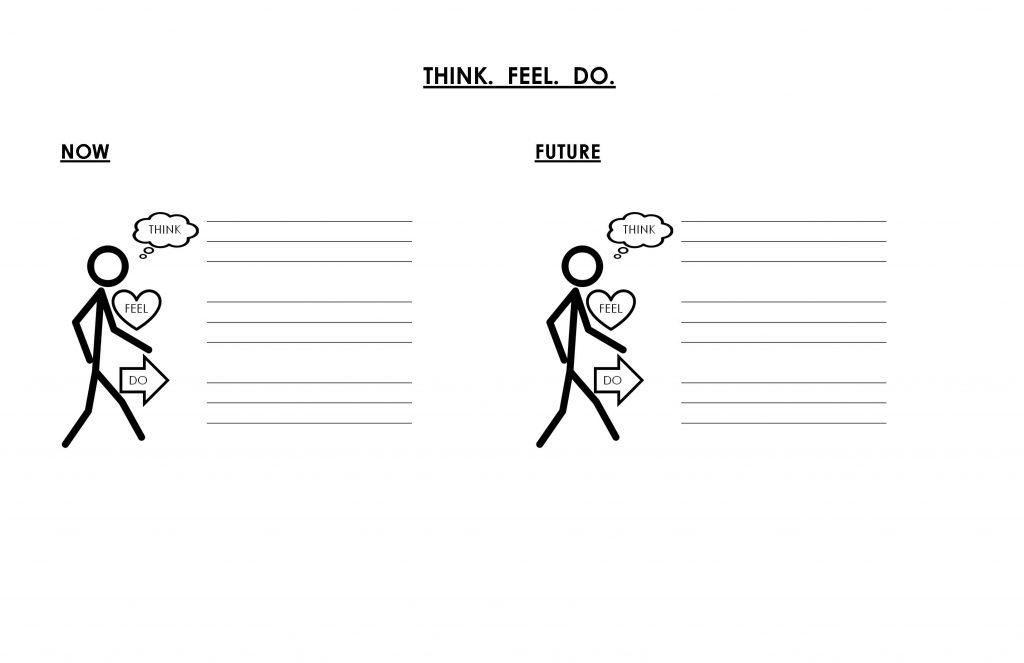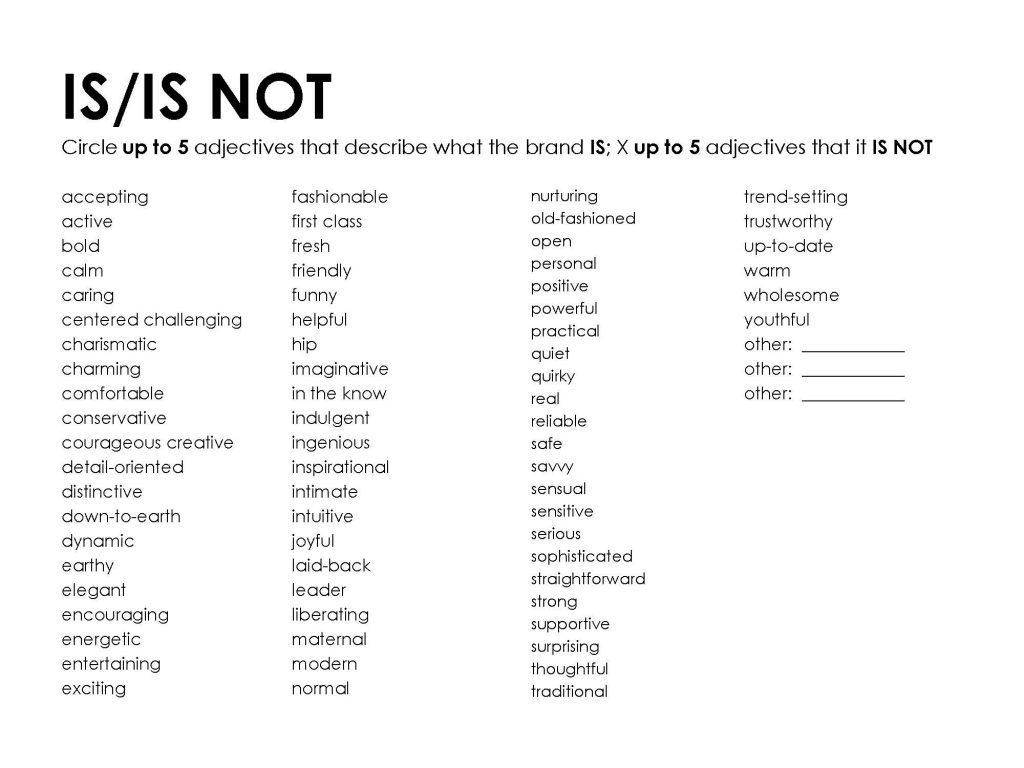This installment in my blog post series on how to scale-up your brand introduces two brand tools. Use them in your process of developing or refining the strategic platform of your brand. They will help you identify and clearly articulate your brand purpose, values, and attributes.
Let’s begin with some definitions:
- brand purpose is your reason for being/what you stand for
- key brand values are the principles that guide the brand’s actions/your unique way of doing things
- defining brand attributes are the operating characteristics and personality traits that distinguish your brand
These three elements comprise your brand identity, which is one half of the strategic platform of your brand. Your brand positioning is the other half of your strategic brand platform. Together they form the building blocks that create a strong, differentiated, valuable brand.
Exercises like the ones I describe below are helpful in developing these brand building blocks because they cause participants to be more thoughtful about the brand they’re creating and why — and they help people be more articulate and specific as they describe their brand vision.
I recommend forming a team of 3-6 people to work through these exercises together. Include key brand stakeholders — i.e., people who have a key stake in the success of your brand — such as the founders, executives, employees, investors, strategic partners, perhaps even a select customer or two. Sometimes it’s helpful to include an objective facilitator to encourage open and active participation and/or an inspirational muse to contribute out-of-the box ideas.
The goal is to get everyone’s insights and input on the brand out on the table and to develop a clear shared vision for the strategic brand platform. The process of doing the exercises together creates shared understanding and ensures that different perspectives are considered in the development of the platform. One final note: The exercises are simply tools to cultivate robust discussion. If you find your group deviating from the exercise process but having a great discussion about the brand anyway, go with the flow — you’ll likely end up in the same place. Likewise, don’t just go through the motion of the exercises without ensuring that they prompt productive conversation.
Brand Tools
Exercise #1: The first exercise is called “THINK. FEEL. DO.” It’s a Thematic Apperception “Test” (TAT) borrowed from the world of psychology. It’s a projective exercise, meaning that it helps to reveal underlying motives, appeals, and concerns. Most TATs use ambiguous pictures of people and ask participants to make up narratives about the images.
To help uncover a brand’s purpose and values, use stick figure pictures of a brand customer now and in the future. Participants should make up narratives about the person’s thoughts, feelings, and actions before and after the brand launch (or before and after he becomes of aware of the brand and tries it) — i.e., what is he thinking, what is he feeling, and what is he doing.

Even though developing your brand platform should be a fun and creative process and the use of stick figures in this exercise specifically may seem playful, encourage participants to think deeply as they create the narratives. You really want to get at the change in the world they see the brand making and how the brand makes it. For example, in the post-launch “Do” section, get beyond the basic outcome that customers will go buy the brand once it’s available. Consider how the brand might change their lives — how they might relate to themselves, people, and/or their environments differently; or what decisions they might make differently; how they might spend their time or money differently.
Look for similarities and differences among the narratives; discuss the appeal of the similarities and the reasons for the differences. Extract from the discussion key themes that form the brand purpose.
Tips:
- As a warm–up or to get unstuck, you could ask participants to do a version for their favorite brand.
- To push the thinking, consider asking the group identify a brand that it wants to emulate and have everyone write narratives about it — then discuss how the themes relate to your brand.
Exercise #2: The second exercise, IS/IS NOT, uses an adjective checklist to identify the values and attributes that define the way the brand behaves and distinguish the brand.
Participants are given a list of 50-75 descriptive adjectives and asked to circle up to 5 adjectives that describe what it IS and cross out up to 5 adjectives that it IS NOT. You can also give them the option of writing in their own words, but they should do so only if they believe an important factor is not represented by any of the words on the page and they should use single-word, descriptive adjectives.

The effectiveness of this exercise depends on the list of adjectives given to participants. Below is an example of a list I used for a new brand of healthful snacks. Usually I select words that:
- are different from ones that describe primary competitors and the category in general
- would parse out nuanced but important ideas — e.g., comfortable, down-to-earth, earthy, and laid-back are similar terms but each connotes a slightly different feel
- are drivers that might speak to customers’ unmet and unfelt needs
- I have previously heard stakeholders use to describe the brand
I avoid words like “authentic” and “cool” for reasons that this post explains. I also don’t include “fun” or “passionate” unless the degree to or nature with which the brand would embrace these ideas is particularly distinguishing.
As with Exercise #1, look for similarities and differences among people’s choices; discuss the relevance of the similarities and the subtleties for the differences. Extract from the discussion key descriptors that make up the brand values and attributes.
Tip:
- If you conduct this exercise before the brand exists in any form, ask participants to select words based on what they think the brand SHOULD/SHOULD NOT be.
Coming up next in the “Scale Up Your Brand” series is another brand tools. If you want to mbe notified when I publish the post, consider subscribing to my feed.
previous posts:
The post scale-up your brand — set your brand purpose, values, and attributes appeared first on Denise Lee Yohn.











